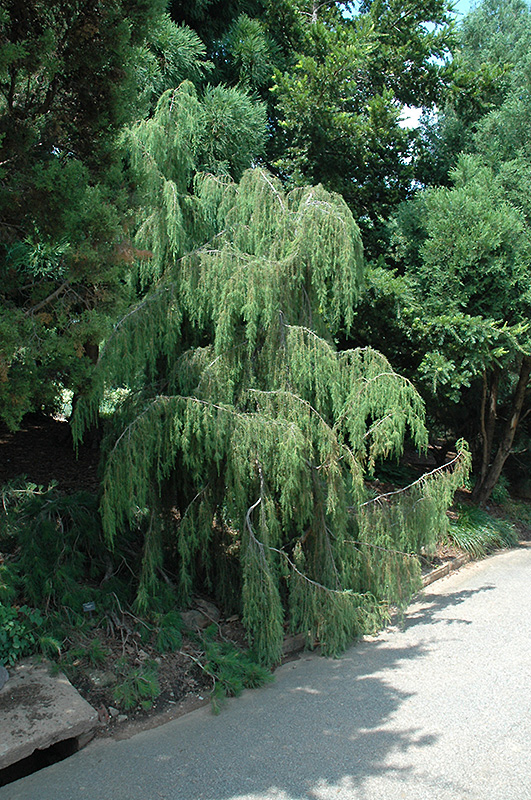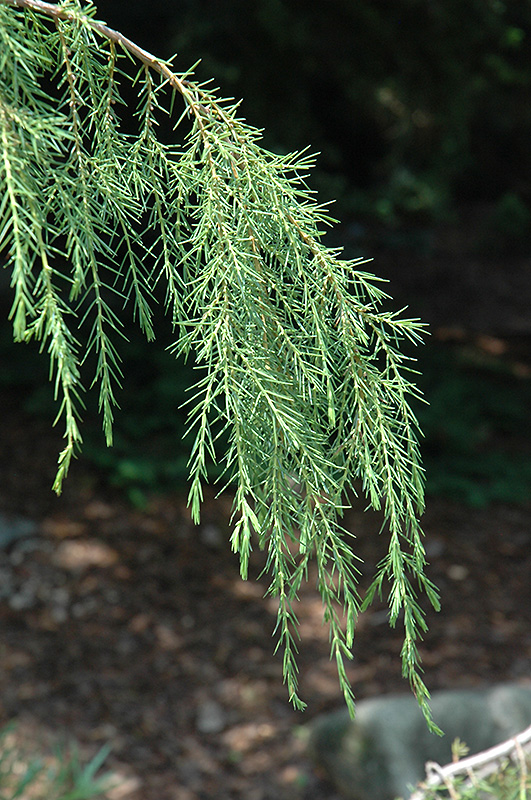>> Home
Height: 20 feet
Spread: 8 feet
Sunlight:
![]()
![]()
Hardiness Zone: 4a
Other Names: Weeping Rigid Needle, Japanese Temple Juniper
Description:
The weeping branches and upright, irregular form of this tree make it a unique specimen in the landscape; its branches reach out like bright green arms; blue-black fruit adds ornamental value; deceptively sharp needles turn somewhat bronze in cool weather
Ornamental Features
Needle Juniper is primarily valued in the landscape for its highly ornamental weeping form. It has attractive light green evergreen foliage. The needles are highly ornamental and remain light green throughout the winter.
Landscape Attributes
Needle Juniper is an open evergreen tree with a strong central leader and a rounded form and gracefully weeping branches. It lends an extremely fine and delicate texture to the landscape composition which can make it a great accent feature on this basis alone.
This is a relatively low maintenance tree, and is best pruned in late winter once the threat of extreme cold has passed. Deer don't particularly care for this plant and will usually leave it alone in favor of tastier treats. It has no significant negative characteristics.
Needle Juniper is recommended for the following landscape applications;
- Accent
- Hedges/Screening
- General Garden Use
Planting & Growing
Needle Juniper will grow to be about 20 feet tall at maturity, with a spread of 8 feet. It has a low canopy with a typical clearance of 2 feet from the ground, and is suitable for planting under power lines. It grows at a medium rate, and under ideal conditions can be expected to live for 50 years or more.
This tree does best in full sun to partial shade. It is very adaptable to both dry and moist growing conditions, but will not tolerate any standing water. It is considered to be drought-tolerant, and thus makes an ideal choice for xeriscaping or the moisture-conserving landscape. It is not particular as to soil type or pH. It is somewhat tolerant of urban pollution. This is a selected variety of a species not originally from North America.

